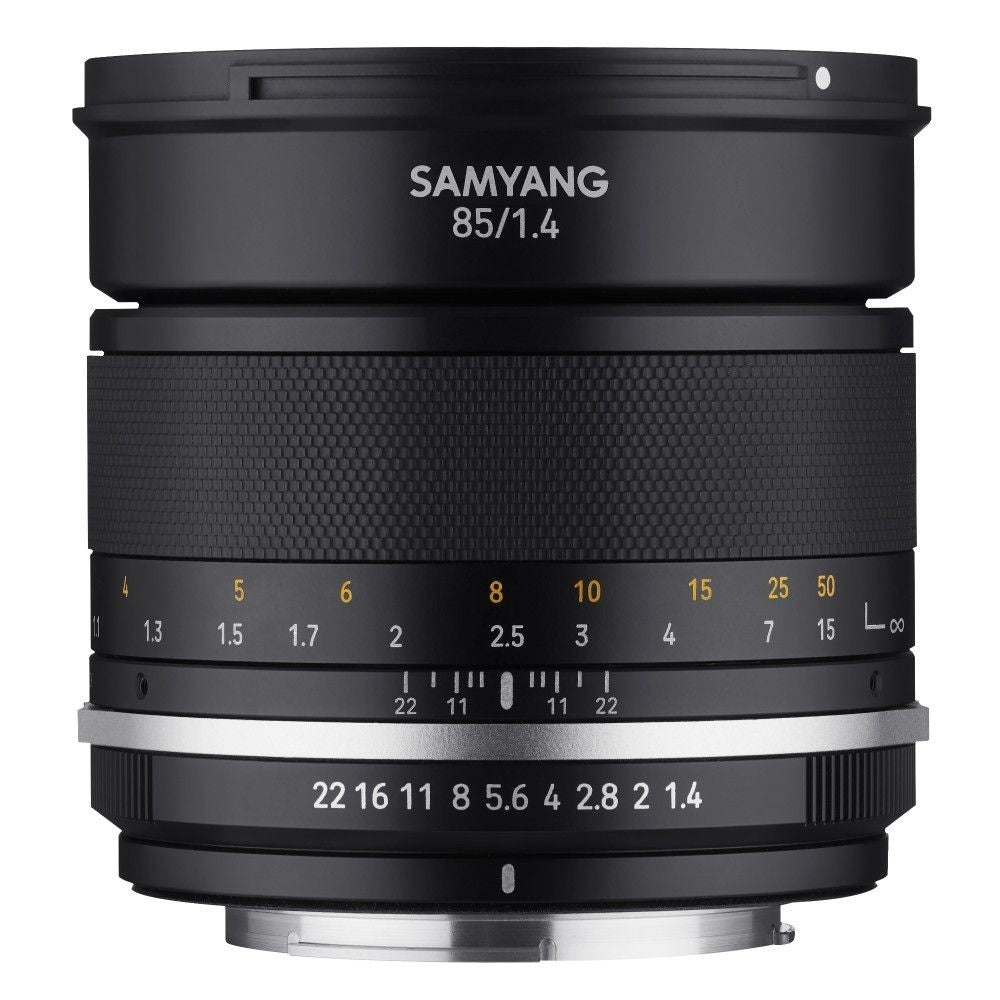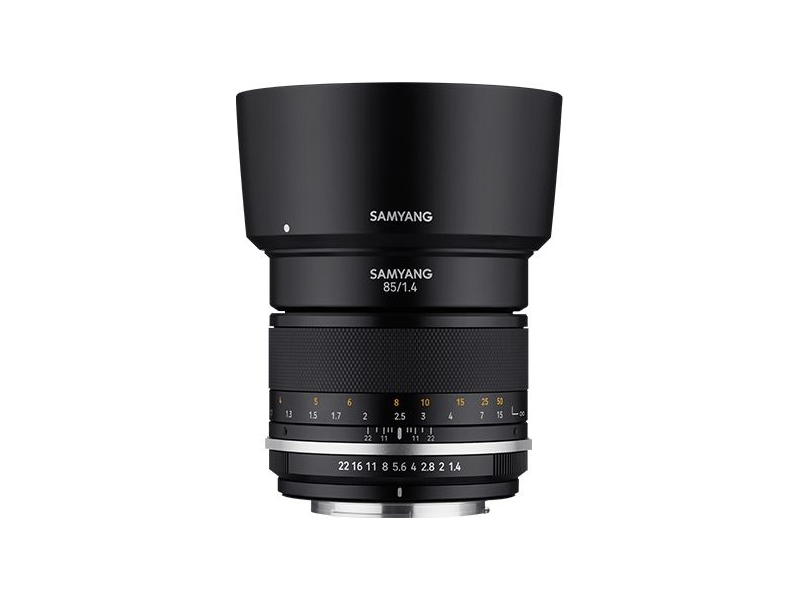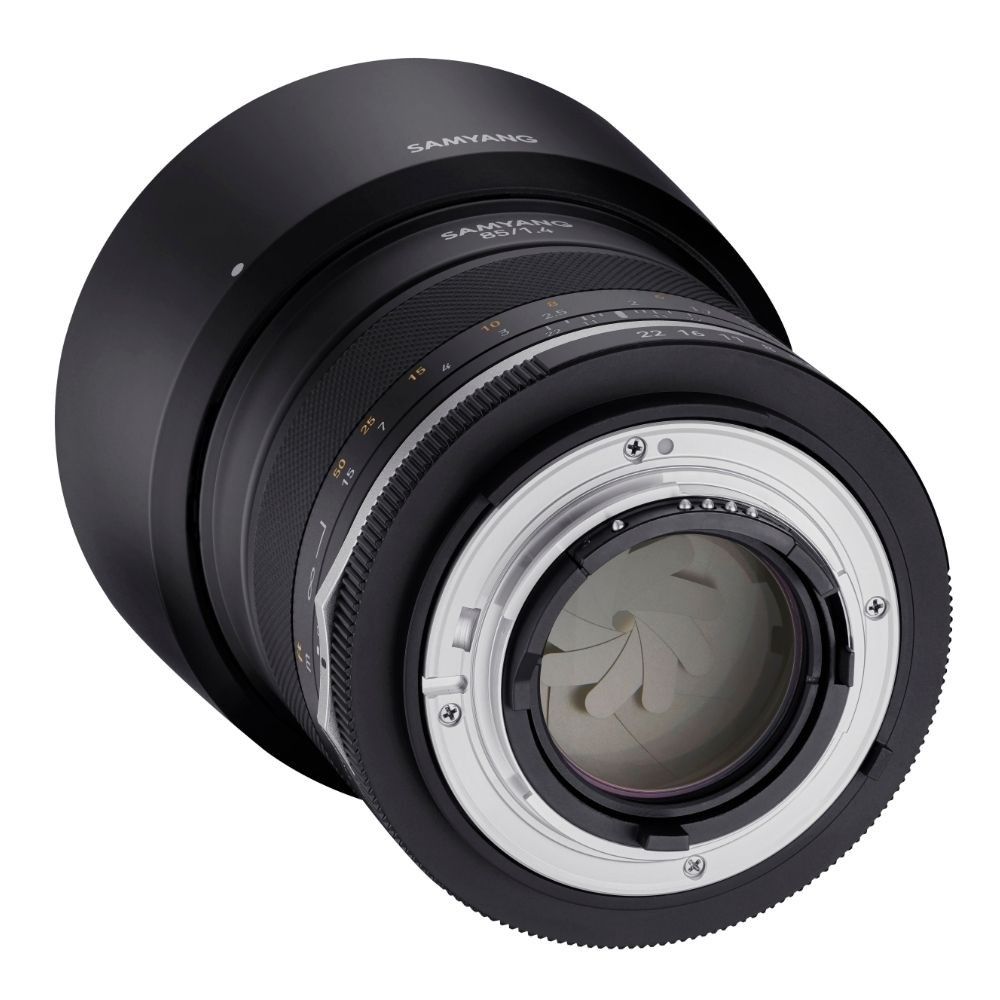Product Description
Samyang MF 85mm F1.4 Mk2 Lens – Micro Four Thirds (MFT)
The Samyang MF 85mm F1.4 Mk2 Lens for Micro Four Thirds cameras is a versatile, manual-focus lens designed for photographers and videographers seeking expressive image quality and creative control. With its fast f/1.4 aperture, smooth bokeh, and innovative features, this compact and lightweight lens is perfect for portraits, travel, and nature photography.

Key Features:
-
De-Click Function for Video:
- Offers the option to remove aperture click stops for smooth, noise-free adjustments during video recording.
- Easily switch between "click" and "free" modes using the silver ring on the lens.
-
Smooth Bokeh for Portraits:
- Features a 9-blade aperture for beautifully rounded highlights and a soft, dreamy bokeh effect.
- Produces 18-ray sun stars when stopped down, adding a creative flair to your compositions.
-
Expressive Image Quality:
- Fast f/1.4 aperture allows for excellent low-light performance and stunning subject-background separation.
- UMC multi-layer coating minimises flare and ghosting for crisp, vibrant images.
- Optical system with 9 elements in 7 groups, including an aspherical hybrid lens, ensures edge-to-edge sharpness and minimal image distortion.
-
Weather-Sealed Design:
- Weather sealing around the bayonet mount protects the lens interior from moisture and dust, making it reliable for outdoor photography.
-
Compact and Lightweight:
- Weighing only 587g and measuring approximately 10cm, it’s much lighter and more portable than many other 85mm lenses, making it perfect for on-the-go photography.

Specifications:
- Focal Length: 85mm (170mm equivalent on MFT cameras)
- Maximum Aperture: f/1.4
- Minimum Aperture: f/16
- Lens Construction: 9 elements in 7 groups
- Field of View: 14.4° (on MFT sensors)
- Aperture Blades: 9 (rounded)
- Minimum Focusing Distance: 1.0m
- Filter Thread Size: 72mm
- Weight: 587g
- Length: Approx. 10cm
- Mount: Micro Four Thirds

Ideal For:
- Portrait Photography: The fast f/1.4 aperture and smooth bokeh make this lens a standout choice for creating beautiful, subject-focused portraits.
- Video Filming: The de-click aperture function offers seamless transitions, perfect for cinematic storytelling.
- Travel and Nature Photography: Compact and lightweight, the lens is easy to carry, while its weather-sealing ensures reliability in various environments.
- Creative Photography: The combination of ultra-smooth bokeh and the ability to produce 18-ray sun stars enables artistic and unique shots.

Why Choose the Samyang MF 85mm F1.4 Mk2 Lens?
- Creative Control: Manual focus and the de-click function allow for precise adjustments and greater artistic flexibility.
- Professional Results: Exceptional optical quality ensures sharp, vibrant images with minimal aberrations.
- Portable and Durable: Lightweight, compact, and weather-sealed, this lens is built for both studio and outdoor use.
- Budget-Friendly Excellence: Delivers premium performance at a fraction of the cost of other lenses in its class.
Whether you’re capturing stunning portraits or experimenting with cinematic video, the Samyang MF 85mm F1.4 Mk2 Lens for Micro Four Thirds cameras is a versatile and high-performance tool for photographers and filmmakers alike. With its expressive image quality and innovative features, this lens is a reliable choice for any creative endeavour.
Payment & Security
Your payment information is processed securely. We do not store credit card details nor have access to your credit card information.























